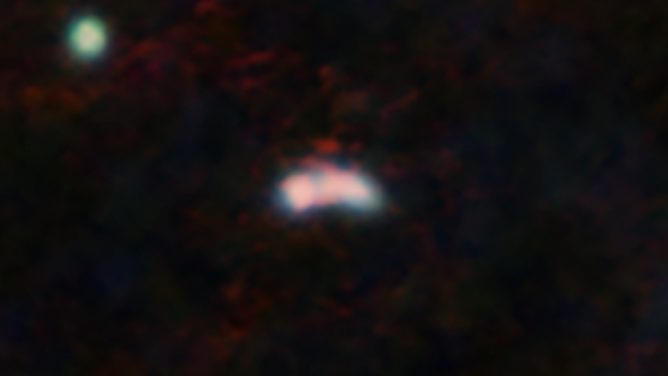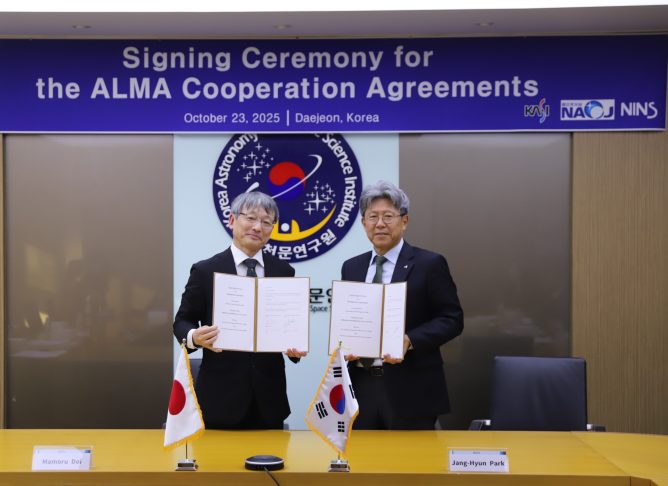2024.12.24
A Baby Star in Action: B335 Offers a Natural Laboratory for Astrochemistry
Stars grow episodically, with periods of slowly increasing mass interrupted by dramatic events when extra-large amounts of matter land on the star. These events increase the star’s brightness, which heats nearby dust and releases previously frozen COMs into the surrounding gas. However, scientists observed a surprising twist: after the burst ended, the COMs did not refreeze onto the dust as quickly as expected.
“This discovery challenges previous assumptions about the freeze-out timescale of these molecules,” says Jeong-Eun Lee, the lead researcher from Seoul National University. “The prolonged presence of gas-phase COMs reveals the dynamic and complex chemical processes happening around young stars.”
Thanks to ALMA’s unparalleled sensitivity, the study marks the first real-time tracking of molecular changes across a burst cycle. Continuous monitoring of this protostar with ALMA will reveal the timescales for gas cooling, chemical reactions, and interactions between dust grains and gaseous molecules.
Unlike laboratory scientists, astronomers cannot experiment on the cosmos. Remarkably, B335 has performed a “natural experiment” in astrochemistry, showing how the ingredients for life might evolve in stellar nurseries.
“By combining the ALMA results with data from the James Webb Space Telescope (JWST) on the ice component of the COMs in B335, the chemistry of COMs will be fully known,” commented Yao-Lun Yang, another co-author from the RIKEN.
The findings, published in the Astrophysical Journal Letters as “A Natural Laboratory for Astrochemistry, a Variable Protostar B335”, open a new chapter in studying how the building blocks of life form and transform across the cosmos.
The Atacama Large Millimeter/submillimeter Array (ALMA), an international astronomy facility, is a partnership of the European Organisation for Astronomical Research in the Southern Hemisphere (ESO), the U.S. National Science Foundation (NSF) and the National Institutes of Natural Sciences (NINS) of Japan in cooperation with the Republic of Chile. ALMA is funded by ESO on behalf of its Member States, by NSF in cooperation with the National Research Council of Canada (NRC) and the National Science and Technology Council (NSTC) in Taiwan and by NINS in cooperation with the Academia Sinica(AS) in Taiwan and the Korea Astronomy and Space Science Institute (KASI).

Figure 1. Time variation of B335. (Top) ALMA observations of the continuum. (Middle) ALMA observations of Complex Organic Molecules. (Bottom) Illustrations. (Credit: ALMA (ESO/NAOJ/NRAO) / J.-E. Lee et al.)

Figure 2. Animation of Time variation of B335. (Left) Bolometric luminosity from mid-infrared observations. (Middle) ALMA observations of the continuum. (Right) ALMA observations of Complex Organic Molecules. (Credit: J.-E. Lee et al.)

Figure 3. Illustrations of “natural experiment” around B335. (Credit: ALMA (ESO/NAOJ/NRAO) / J.-E. Lee et al.)









